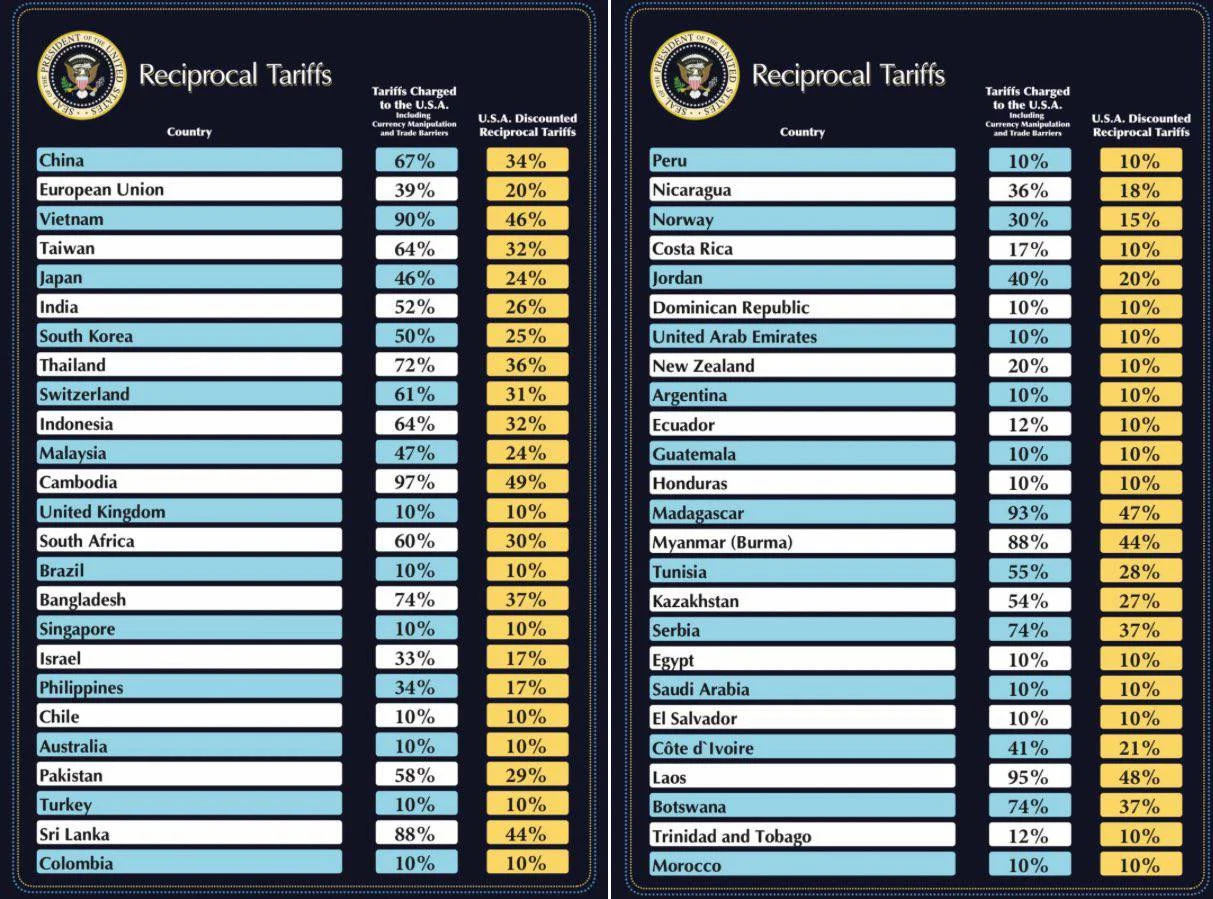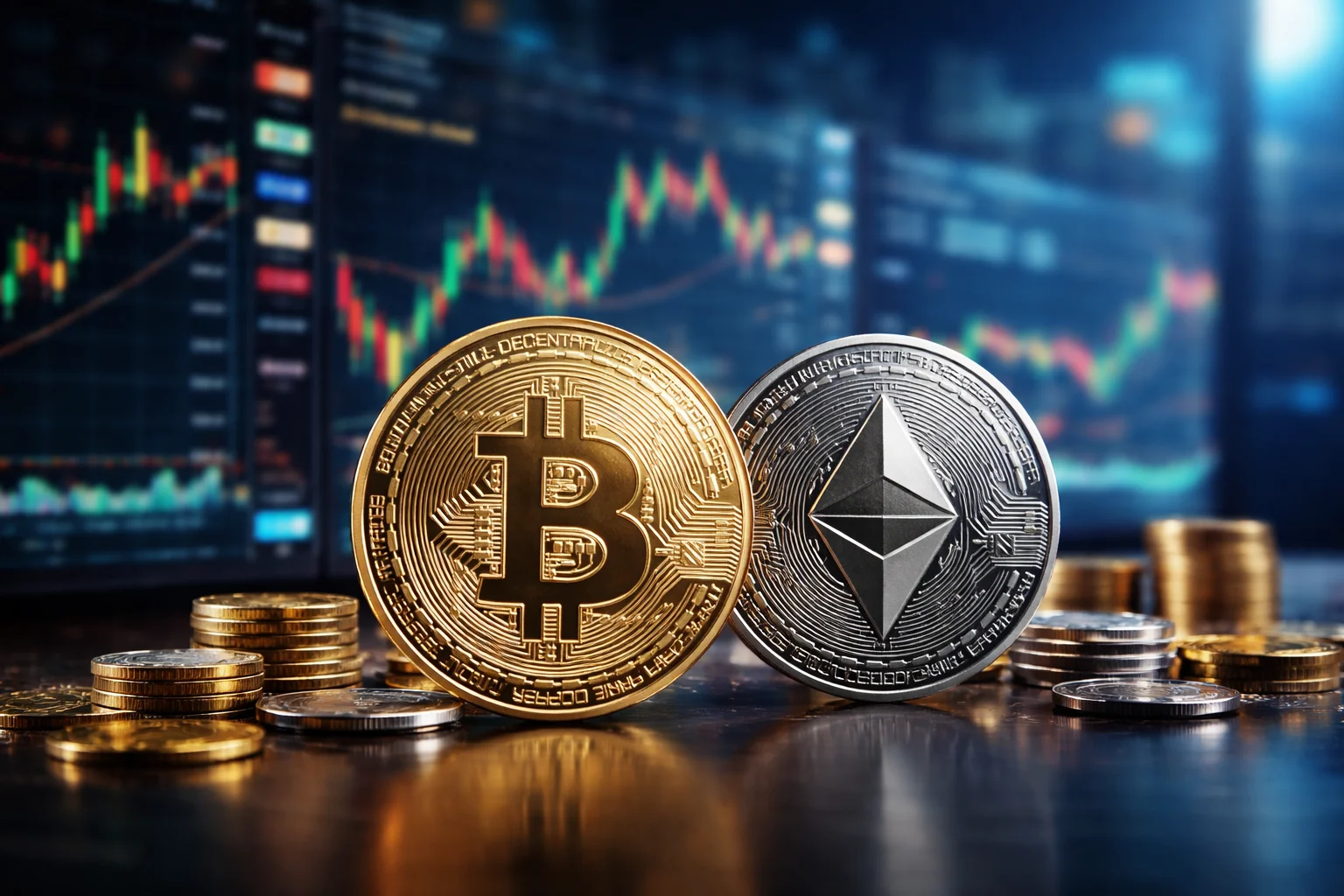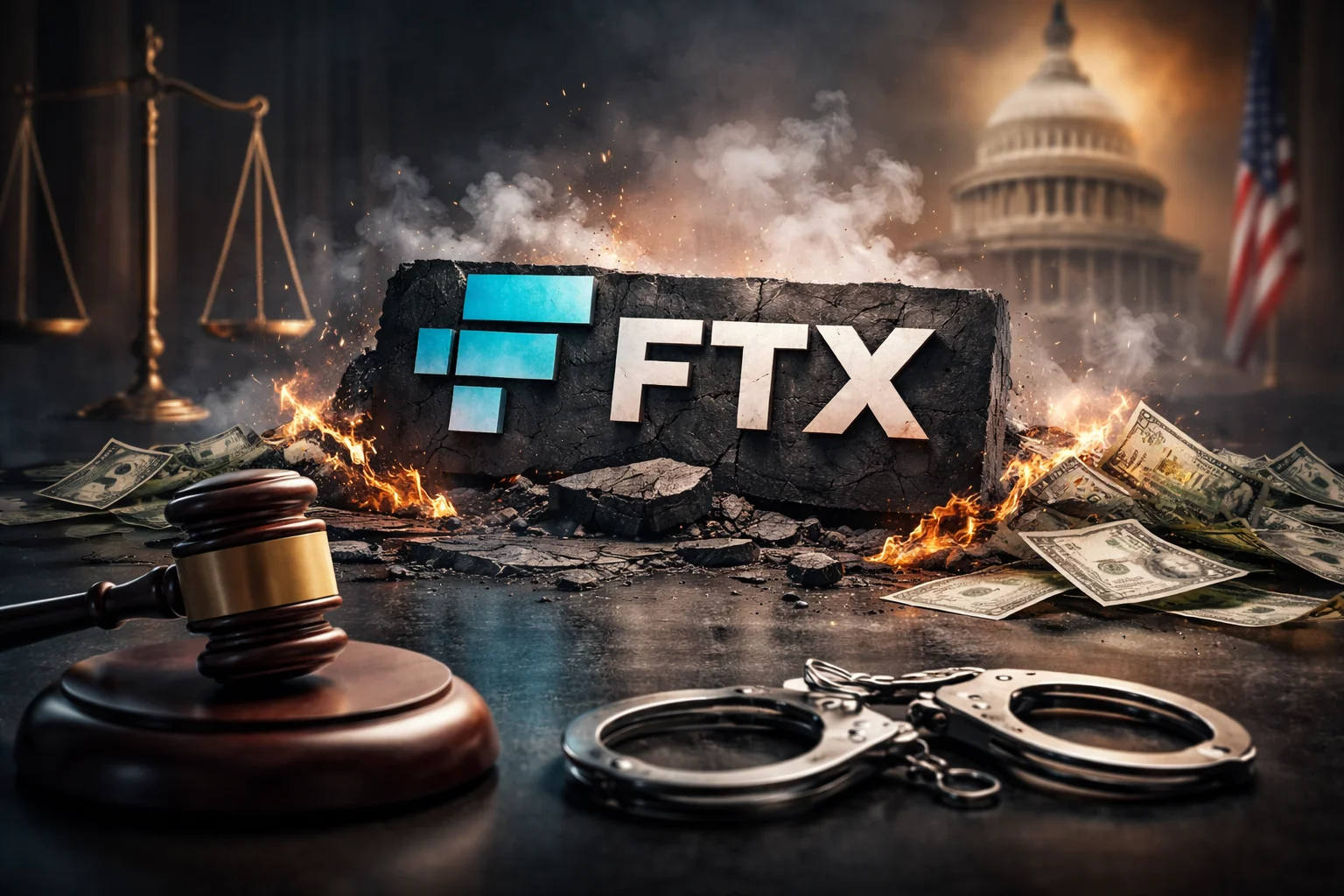In a highly anticipated press conference on April 2nd, U.S. President Donald Trump unveiled a comprehensive set of tariff regulations aimed at reshaping the global trade landscape. Holding a detailed chart as he approached the podium, Trump announced new tariff rates targeting a range of countries, including China, the European Union, Turkey, and the United Kingdom.
At the core of his speech was a commitment to "reinvigorating the American economy" and "recovering lost jobs." Trump also addressed broader political issues and international relations, delivering striking messages on current global challenges.

NEW TARIFFS: WHO WILL BE AFFECTED AND HOW MUCH?
According to the list presented by Trump, imports from China will now face a 34% tariff. When combined with a previously announced 20% duty, the total tariff on Chinese goods rises to 54%.
Here’s a breakdown of the new tariffs:
- China: 54% (34% new + 20% previous)
- European Union: 20%
- Japan: 24%
- United Kingdom: 10%
- Turkey: 10%
Trump described these tariffs as part of a principle he called “reciprocal or respectful reciprocity,” blaming long-standing “unfair” trade policies by other nations for the tough new measures.
STRONG MESSAGES TO CANADA AND MEXICO
Trump opened his remarks with pointed criticisms of Canada and Mexico. Highlighting that “Canada imposes a 300% tariff on dairy products,” he called this policy “absolutely unfair.” As for Mexico, Trump condemned the $200 billion in annual economic aid sent without any meaningful return to the U.S.
“We’re accumulating massive debt because we’ve been subsidizing these countries for decades,” he said, emphasizing that the U.S. will now prioritize its own citizens and industries.
UNFAIR TRADE PRACTICES: “THEY TAKE FROM US BUT GIVE NOTHING BACK”
Another key point in Trump’s address was the imbalance in international tariffs. From Australian beef imports to Japan’s high duties on rice, he cited numerous examples of what he called skewed trade practices.
He claimed that countries like China, Japan, Taiwan, India, and the EU have harmed the U.S. economy by aggressively protecting their own industries. For instance, Taiwan imposes a 64% tariff on some goods, while the U.S. only levies 32% in return. “If they want 64%, we can match that,” Trump said, “but for now, we’ll settle for 32%.”
REVIVING AMERICAN INDUSTRY
Trump argued that the new tariff policies would ignite a manufacturing revival in the United States. He outlined major investment plans from global tech giants, automakers, and chip manufacturers:
- Apple is planning a $500 billion investment.
- Taiwanese chip manufacturers are considering a $200 billion factory project.
He claimed this would lead to the reopening of shuttered factories and the creation of thousands of jobs, particularly in the auto sector. “We’re going to turn this country into an industrial paradise,” he said, emphasizing that his plan supports not just big corporations, but also unions and small manufacturers.
UKRAINE, THE MIDDLE EAST, AND GLOBAL CONFLICTS
While the focus was on economic reforms, Trump also briefly touched on geopolitical issues, including Russia, Ukraine, the Middle East, and Houthi rebels. “On top of these tariffs, we’re also dealing with international crises,” he said.
Though he didn’t provide detailed solutions, statements like “we’re sinking ships” suggested ongoing U.S. military operations. Trump emphasized the importance of managing both economic and political battles simultaneously, calling it “an intense but necessary process.”
“SLEEPY JOE” AND ECONOMIC CONTRASTS
Trump didn’t hold back in criticizing President Joe Biden. “During Sleepy Joe’s term, we lost thousands of jobs, ran up historic trade deficits, and faced a migrant surge,” he said. In contrast, Trump claimed his own policies are aimed at reducing inflation, boosting production, and tightening border security.
He highlighted the sharp drop in egg prices—“a 59% decrease”—as evidence that his agricultural policies are working, giving credit to his Secretary of Agriculture.
IMMIGRATION POLICY: “COME LEGALLY, OUR DOORS ARE OPEN”
On immigration, Trump took a firm stance. He reiterated that foreign nationals who commit crimes should not be tolerated and accused “radical judges” of hampering enforcement efforts.
Still, he acknowledged the potential labor needs in factories and industry. “For those who want to come legally and love this country, our doors are open,” he said, positioning legal immigration as a way to strengthen the U.S. economy.
TAX CUTS AND THE DEFICIT PLAN
Trump announced work on a new legislative package: “If you buy an American-made car, we’ll offer interest rate discounts and easier credit. That will boost domestic production.” One of his main goals is to make tax cuts permanent and eliminate the national deficit.
Calling it the “largest legislative package in U.S. history,” he acknowledged it may not please everyone, but insisted it would bring immense benefits to the nation.
A NEW ERA FOR THE U.S. ECONOMY?
Trump’s April 2nd speech wasn’t just about tariffs. It marked a bold redefinition of America’s role in global trade. He vowed to end “one-sided arrangements” and make the country “wealthy again.”
What impact will these controversial tariffs have on international trade balance, economic growth, and global markets? The answers will unfold in the months ahead. But one thing is clear: President Trump is promising a radical transformation in economic and trade policy.
With sweeping investment plans, revised tariffs, tax incentives, and strict immigration rules, this new phase is expected to spark significant changes—particularly in manufacturing. Both global markets and American businesses will be closely watching to assess the real effects of these historic announcements.
Trump has made it clear: his “America First” strategy is here to stay.




